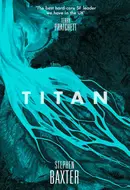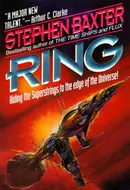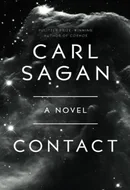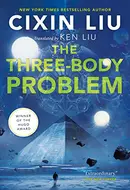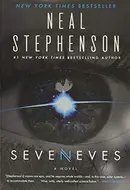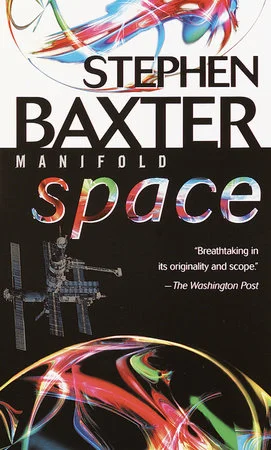
'Manifold: Space' by Stephen Baxter is a science fiction novel that explores the Fermi Paradox through the eyes of characters like Reid Malenfant who investigate the existence of aliens near Earth. The book delves into questions about the purpose of intelligent life after billions of years of evolution, the life expectancy of space-faring species, and the adaptations of humans and non-carbon-based life forms in various locations throughout the universe. The plot takes readers on a mind-stretching journey full of unique and fascinating ways in which Baxter's characters search for answers to profound questions regarding the existence of sentient life in the universe.
The narrative of 'Manifold: Space' is a blend of hard science fiction and fantastical elements, offering an exploration of the future of humankind in a world with extraterrestrial life. Baxter's visionary concepts and ideas, although occasionally slow-paced, create a captivating story that challenges readers to ponder the Fermi Paradox and the potential implications of encountering advanced alien races. The book presents a thought-provoking scenario that tackles themes of evolution, physics, and the vastness of space, ultimately providing answers that are both chilling and hopeful.
Genres:
Tropes/Plot Devices:
Topics:
Notes:
Sensitive Topics/Content Warnings
Content warnings include themes of death, violence, and existential dread due to cosmic events.
From The Publisher:
"As always, [Stephen] Baxter plays with space and time with consummate skill. . . . He continues to be one of the leading writers of hard science fiction, and one of the most thought-provoking as well."-Science Fiction Chronicle
The year is 2020. Fueled by an insatiable curiosity, Reid Malenfant ventures to the far edge of the solar system, where he discovers a strange artifact left behind by an alien civilization: A gateway that functions as a kind of quantum transporter, allowing virtually instantaneous travel over the vast distances of interstellar space. What lies on the other side of the gateway? Malenfant decides to find out. Yet he will soon be faced with an impossible choice that will push him beyond terror, beyond sanity, beyond humanity itself. Meanwhile on Earth the Japanese scientist Nemoto fears her worst nightmares are coming true. Startling discoveries reveal that the Moon, Venus, even Mars once thrived with life-life that was snuffed out not just once but many times, in cycles of birth and destruction. And the next chilling cycle is set to begin again . . .
"When the travel bug bites and usual planets don't excite, perhaps it's time to burst the bounds of this old solar system and really see the sights. . . . Baxter's expansive new novel is just the ticket."-The Washington Times
"Breathtaking in its originality and scope."-The Washington Post
Ratings (1)
Loved It (1) |
Reader Stats (1):
Read It (1) |
What can you read after
Manifold: Space?
About the Author:
Stephen Baxter is a trained engineer with degrees from Cambridge and Southampton Universities. Baxter is the winner of both the British Science Fiction Association Award and the Locus Award, as well as being a nominee for an Arthur C. Clarke Award,…
When you click the Amazon link and make a purchase, we may receive a small commision, at no cost to you.

